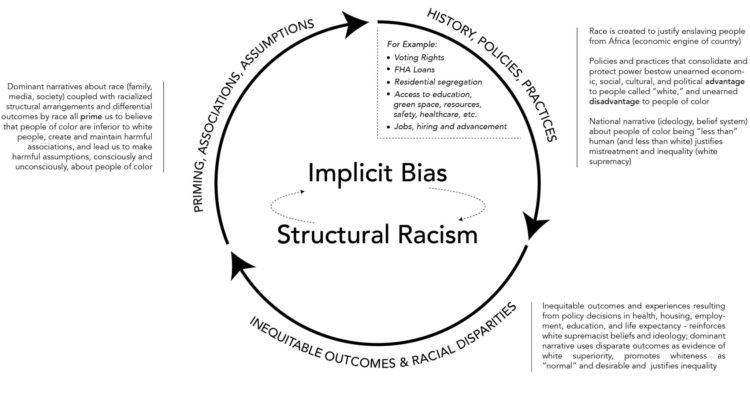Additional Resources

The National Museum of African American History & Culture curates very good material to help facilitate learning on the topics embedded in Mrs. Dwyer’s communication to all staff and our communities.
By clicking on the following links, you can start or continue your individual journey on the path to empathy, understanding, and join us on the path to becoming antiracist:
- Bias
- Being Antiracist
- Community Building
- Self-Care
- Race and Racial Identity
- Social Identities and Systems of Oppression
- Whiteness
- Historical Foundations of Race
VIDEOS/PODCASTS
- ‘Intergroup anxiety’: Can you try too hard to be fair?from the Christian Science Monitor (5 min)
- Allegories on race and racism by Camara Jonesfrom TEDxEmory (4 min)
- Ibram X. Kendi: Creating A More Equitable Society Is In White Americans’ Self Interest from The Late Show with Stephen Colbert (12.5 min)
- How I Learned to Stop Worrying and Love Discussing Race by Jay Smooth from TEDxHampshireCollege (12 min)
- NPR Code Switch Podcast: A Decade of Watching Black People Die(22 min) PLEASE NOTE: This resource contains strong language as it includes quotes from actual accounts of police brutality.
- A Conversation with My Black Sonfrom The New York Times (5 min) Overview: In this short documentary, parents reveal their struggles with telling their black sons that they may be targets of racial profiling by the police.
1619 from The New York Times, “1619” is a New York Times audio series, hosted by Nikole Hannah-Jones, that examines the long shadow of American slavery.
- A Conversation on Race (Complete Series)from The New York Times (each video is approx. 6 min) Overview: Multiple videos with a range of racial and ethnic perspectives on the lived experience of racism in the US.
- What is the Psychological Impact of Racism? by Mark Brian Hodges-Haynes?from HuffPost Live (30 min) Overview: Little research has been done on the psychological effects of racism, but data reveals that black Americans experience Post-Traumatic Stress Disorder at a prevalence rate of 9.1% versus 6.8% in non-Hispanic Whites. This conversation explores the relationship between racism and PTSD, much of which is linked to the difficulty of talking about racism.
- Why “I’m not racist” is only half the story by Robin DiAngelofrom Big Think (7 min) Overview: Robin DiAngelo explains the function of white fragility in maintaining racial hierarchy.
- How to be an Antiracist by Professor Ibram X. Kendifrom the Aspen Institute (54 min) Overview: Explore what an antiracist society might look like, how we can play an active role in building it, and what being an antiracist in your own context might mean.
- The difference between being “not racist” and “anti-racist” by Professor Ibram X. Kendi from TED (51 min)
- “A Conversation With Native Americans on Race” directed by Michèle Stephenson and Brian Youngfrom The New York Times (36 min)
- “We Need to Talk About an Injustice” by Equal Justice Initiative founder and executive director Bryan Stevenson from TED (5 min)
Watch and listen to Howard Ross explain the science of human bias.
Watch and listen to Robin DiAngelo explain the concept of white privilege and constructing white racial identity.
READING
- Understanding the Racial Wealth Gap, 2017 study by Amy Traub, Laura Sullivan, Tatjana Mescheded, & Tom Shapiro analyzing the racial wealth gap that exists between white, black, and Latino households. (PDF)
- So You Want to Talk About Race(2019) by Ijeoma Oluo. In So You Want to Talk About Race, Ijeoma Oluo guides readers of all races through subjects ranging from intersectionality and affirmative action to “model minorities” in an attempt to make the seemingly impossible possible: honest conversations about race and racism, and how they infect almost every aspect of American life.
- Me and White Supremacy: Combat Racism, Change the World, and Become a Good Ancestor(2020) by Layla F. Saad. This eye-opening book/WORKBOOK challenges you to do the essential work of unpacking your biases, and helps white people take action and dismantle the privilege within themselves so that you can stop (often unconsciously) inflicting damage on people of color, and in turn, help other white people do better, too.
- Writing with Color: POC & Food Comparisonsby Collette. Writing with Color has received several asks on this topic. Everything from “how do I describe my character’s skin tone without being offensive?” and “what’s the problem with comparing my character to chocolate and coffee?” I’m hoping to address all these and likewise questions in this guide on describing POCs’ skin color, from light, dark and all that’s in between.
- “A Latino is a Latino is a Latino?” by historian Alfredo Torres Jr. from My San Antonio.
- Interrupting Bias: Calling Out vs. Calling Infrom Seed the Way (PDF)
- Being Antiracistfrom National Museum of African American History & Culture, The Smithsonian
ADDITIONAL RESOURCES